
PERMANENT MAKEUP FOR BROWS
1. What to expect.
First we have a short consulatation. I evaluate your skin, consider your requests and also explain the important factors in choosing the perfect style. After that, I clean your skin and take photos. Then I begin pre-drawing (mapping) and making the correct shape of the brows. I use different tools for mapping to get the right symmetry.
2. Shape of the brows.
The pre-draw is one of the most important steps of the whole procedure. If you see anything you do not like, for example if you think that the brows are not equally thick , something is crooked or bothers you in any way, then tell me. Best work comes with team work. When you and I are both happy with the shape, only then I will start the tattooing process. Mapping can take a long time and up to 1,5 hours if the brows are naturally very unsymmetrical.
3. Contraindication.
X PREGNANCY AND BREAST-FEEDING – If you are pregnant or breast-feeding, you should not do permanent make-up. After breastfeeding, wait 6 months before doing permanent makeup.
X AUTOIMMUNE DISEASE – If you have autoimmune disease, permanent makeup / microblading is not recommended. This is because you may have healing complications due to illness or medication. If you wish, you can consult your doctor.
X DIABETES – Permanent makeup / microblading is not recommended if you have diabetes. High blood sugar can complicate the healing process and put you at risk of infection. If your blood sugar levels change during the procedure, the procedure can be painful and stressful.
X KELOIDARS / HYPERTROPHIC SCORING – If you have a tendency to develop keloid scars, it is not recommended to do permanent make-up / microblading or you should do it on your own risk.
X EPILEPSY – Any part of a permanent makeup procedure can cause an epileptic seizure for some reason. This may be due to pain / stress / constant bright light directed at the face, etc. In addition, it is not known how the medicine used by the client may affect the healing of permanent makeup. The best solution is to consult a doctor.
X RADIATION / CHEMICAL TREATMENT – For cancer patients, microblading / permanent make-up on the eyebrows is a good solution for hair / hair loss due to chemotherapy. However, if you are currently receiving chemotherapy, it is best to wait or make sure your doctor allows you to come for permanent makeup. Chemotherapy can cause neuropenia, which increases the risk of infection and can complicate the healing process. Your immune system is damaged. I need your doctor’s consent to perform the procedure.
X AGE – Permanent make-up is not performed on minors.
4. Healing.
In the first days, the eyebrows are darker than usual. On the fifth day, the eyebrow skin starts peeling. Peeling may be uneven and brows may look like they have holes. These few days are not the most pleasant or beautiful, but makeup should not be applied to the eyebrows at this time. The crusts must not be touched or pulled at, otherwise there will be no pigment in that area after healing. After peeling, 40-60% of the pigment is gone and the result is light. The result can also be uneven. It is also the brightest phase of the healing process immediately after peeling. After that, more pigment will appear for another 4-5 weeks. Healing also depends to a large extent on proper aftercare. After peeling, the itching phase may follow – please do not scratch! You should come to the second procedure after 1,5 -3 months.
5. What happens to permanent makeup later?
When you have completed both procedures for permanent make-up and the eyebrows have healed, they will become lighter over time. They can also change the tone. Permanent makeup may lose its color, but it has nothing to do with the procedure or the quality of the pigment. Pigment changes due to a number of factors, including health. However, permanent makeup can last differently for everyone. For some only one year and for others 3+ years. No one can be compared because body, skin, health and the environment are different. Because of this, it is also difficult to suggest when a permanent makeup correction could be done. I recommend observing the eyebrows change. That is, if the eyebrows are already disturbingly light, if the eyebrows have become dull / gray, and if the eyebrows have changed color (for example, orange / reddish / bluish / gray, etc.). If you think anything mentioned above has happened to your eyebrows, please contact me and we will see if it is time to come to the correction. On average, however, the correction is done after 1-2 years.
6. Price.
X First procedure 210€.
X Second procedure 90€.
X Third procedure (If you wish or need). 70€
X Correction after 1-1,5 years 180€.
X Correction after 1,5+ years 210€.
7. What to do before the procedure?
When booking – Tell me about your allergies. For example if you have allergies for lidocaine. I will send you a consent form that you must carefully read and agree to before booking. You must also confirm that you do not have any contraindications for permanent makeup.
Info – Please read all the info about what I am about to do to your brows. You can find the info on the website, on instagram highlights or Facebook page albums.
Retinol, retinoids and A-vitamin – Please stop using these products on the brows 2 weeks prior to the procedure.
Aplha-hydroxy-acid and Anti-aging products – Please stop using these products week before the procedure.
Plucking – When you come to the procedure, it is best if your brows are not plucked, waxed etc.
Medicine – 48 hours before the procedure you should avoid aspirin, ibuprofen and other blood thinners. Avoid medicine that has strong effects on the body or if you do not know the side effects of the medicine. If you have been prescribed any medicine by doctor, then I strongly suggest consulting with your doctor and not making any changes in your treatment yourself.
Alcohol – Do not drink alcohol 48 hours before the procedure.
Coffee – Do not drink coffee on the day of the procedure!! Avoid other caffeinated drinks also.
8. What to do after the procedure?
Be gentle – On the day of the procedure there might be some fluid coming out of your brows. Wipe them dry gently every 5 -10 minutes for the first 1 hour. The skin might be sensitive for a few days. Do not drink alcohol for a day or two.
Redness and Swelling – You should be ready for redness and swelling on the day of the procedure. Redness usually goes away in a couple of hours.
Avoid – During the week after the procedure, avoid heavy sweating, sauna, swimming, bath, solarium, tanning area, sun beds. Sun makes the pigment lighter and it wears out faster and may leave an uneven result. Use SPF. Do not use makeup and anti-aging products during the healing. Continue lubrication of the area 2x a day for up to 2 weeks.
Peeling – After about 5 days , your brows will be covered with crusts. Skin starts to peel unevenly. Please do not pull and touch the skin. If you pull at the peeling skin, the pigment will come out and the brow will have empty holes in in after healing.
Moisturise – Start applying moisturiser on the brows since the third/fourth day only if you feel that the skin is dry 2x day.
1,5 – 3 months after – Time for the second procedure. Don’t forget to read all of the info about “what to do before the procedure”.
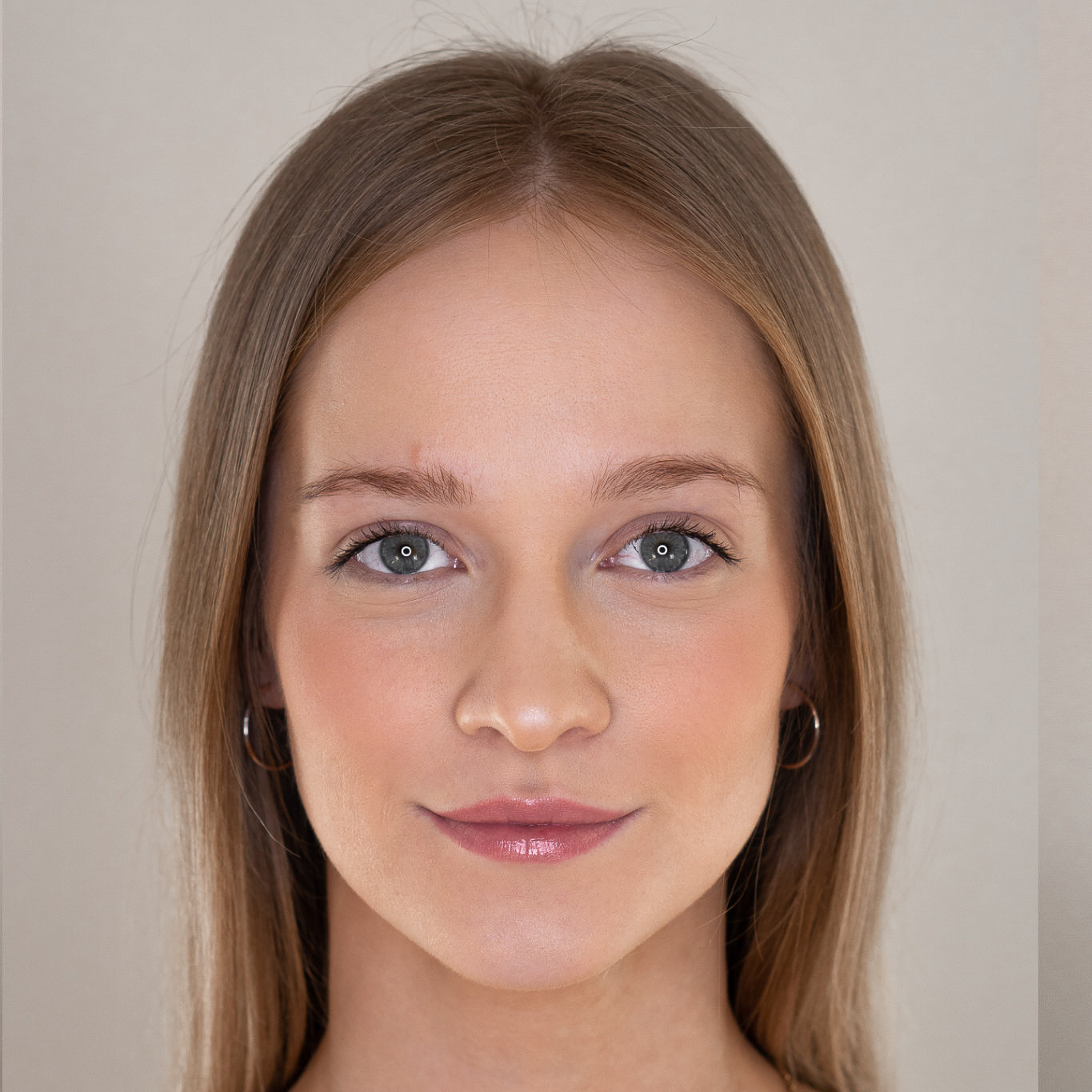
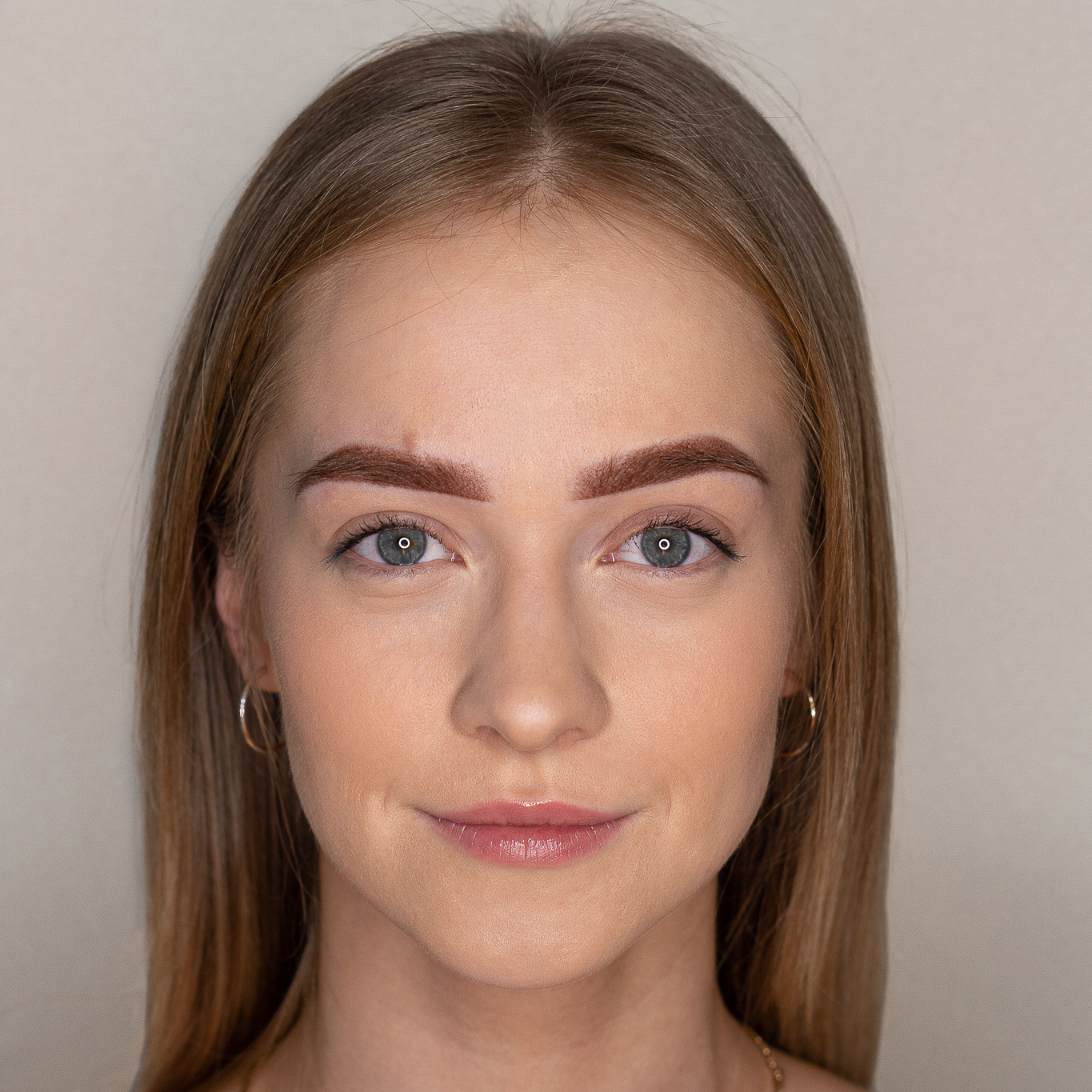
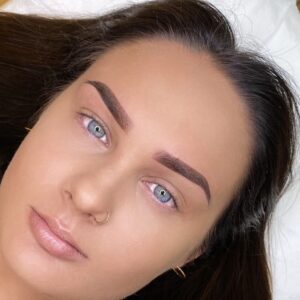
Powder brows – contour is done on bottom part and upper part of the brow and shading in the inner corners. Shading makes the brows look natural. After healing the brows appear lighter and the shading becomes airy. The difference compared to other styles is the contour on the bottom and upper part of the brow. This is the most defined look of all the styles.
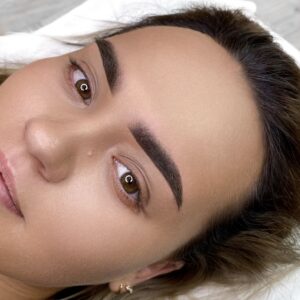
Powder brows – contour is done on bottom part of the brow and shading in the inner corners and upper part of the brow. Shading makes the brows look natural. After healing the brows appear lighter and the shading becomes airy. The difference compared to other styles is the contour on the bottom part of the brow that defines the brow but the shading on the upper part makes the brow look very natural. This style is suitable for everybody.
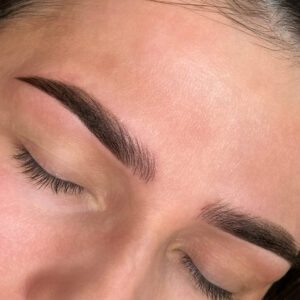
Combination brows are 2-in-1. I add lines that look like hairs in the inner and upper part of the brow and fill the rest with powder. I also do some shading with powder for the hairs and powder to seamlessly combine together. Bottom part of the brow is defined with a contour.
NB! This style is not suitable for greasy or older skin.
HEALING
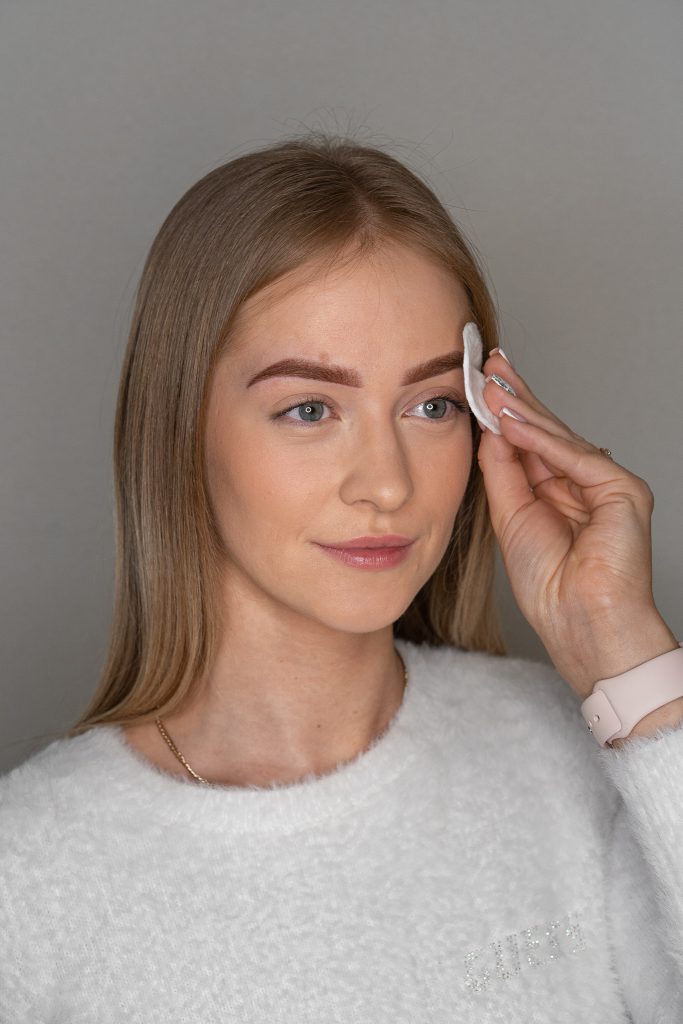
1 – 3 DAY
In the evening before going to bed, wash your eyebrows very gently with a little soap and water. Wash in the direction of eyebrow hair growth. A clean cotton pad can be used for washing. The skin is traumatized and dirt/bacteria can accumulate inside. Failure to maintain hygiene is dangerous to health. After washing your eyebrows, dry them properly by dabbing them very gently with a clean towel or paper towel. Change the pillowcase and avoid sleeping on your face.
From now on, wash your eyebrows twice a day gently with a little soap and then dry them. Morning and evening.
Properly wipe your eyebrows in both directions 2x a day with a clean paper towel or cotton pad. At other times, don’t get your eyebrows wet. Wash your head last in the shower.
Immediately after the procedure and in the days that follow, the eyebrows may appear unusually dark and wide / large. There is no need to worry, because as you they heal, your eyebrows become 40-60% lighter and also narrower.
Redness may also occur immediately after the procedure, which usually disappears within a few hours.
3 – 7 DAY
Continue to wash your eyebrows 2x a day, but wipe them gently from the third day on, because a crust will start to form.
Third / Fourth day – Use moisturizer only if needed. Very small amount 2x day.
FROM DAY 7
Continue washing twice a day. Don’t wipe your eyebrows anymore. Start moisturizing your eyebrows 2x a day with a small amount.
The moisturizer must be applied in a very thin layer (an amount the size of a pea) to allow the eyebrows to receive oxygen. In the shower, avoid water getting on the eyebrows and wash your head only last, as the eyebrows must not be soaked or wet.
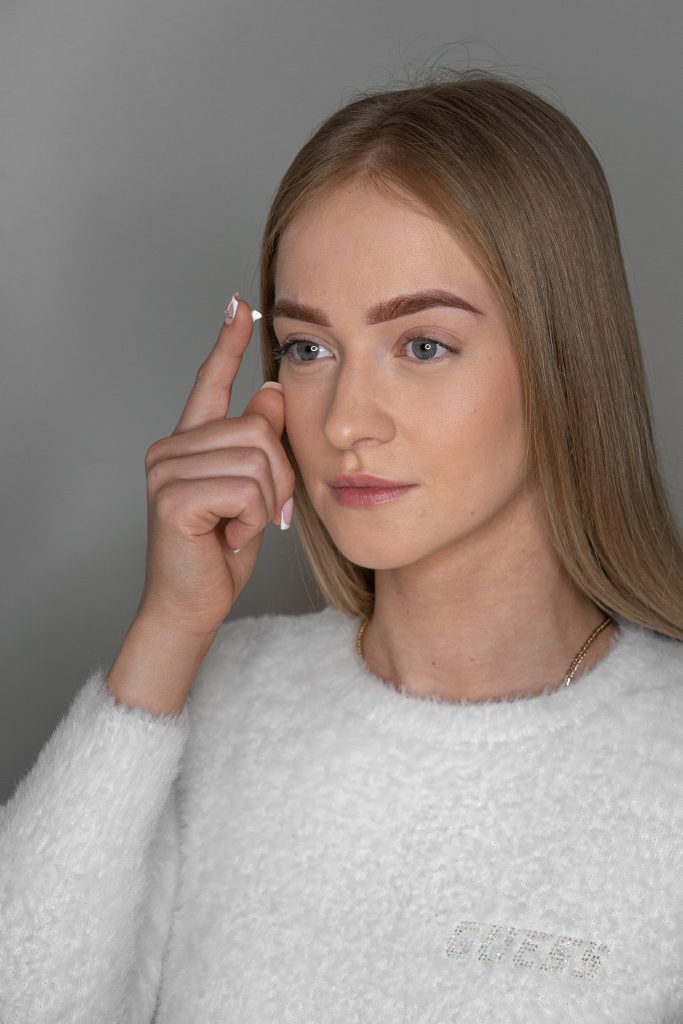
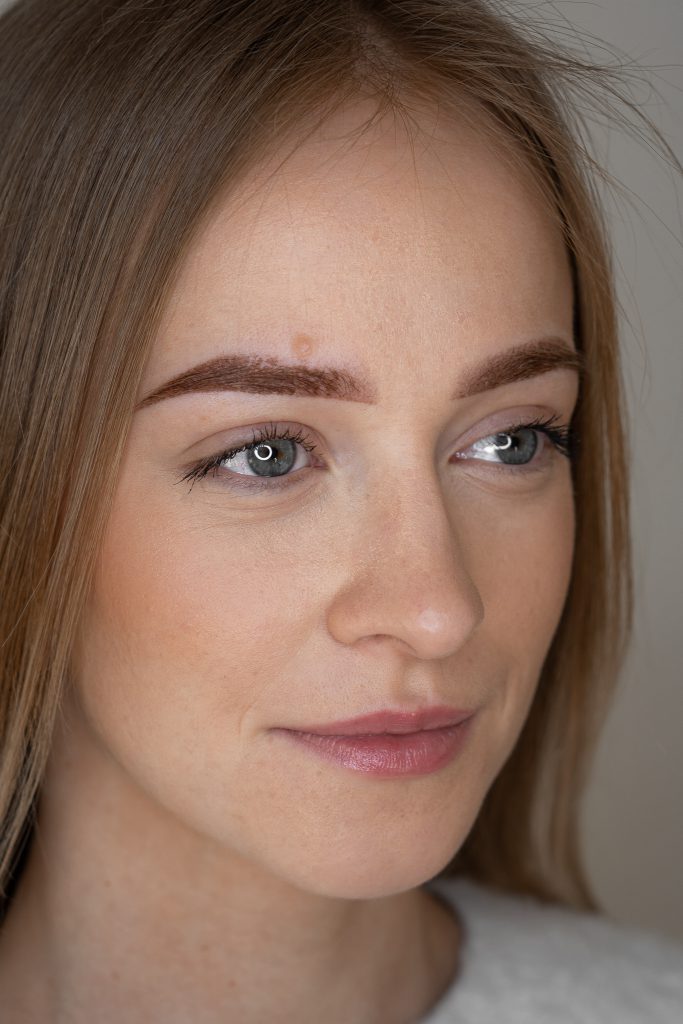
5-7 DAYS
Around this time, crusts form on the eyebrows and begin to come off. Let the crusts fall off, of course. The crusts come off unevenly.
Do not peel the crusts, otherwise you will create pigment-free spots on the eyebrows. Do not scratch or touch eyebrows with dirty hands / objects.
Avoid sauna, swimming pool, solarium, sunbathing and excessive sweating for a week until the eyebrows are completely peeled. Avoid makeup in and around the eyebrows before complete peeling. Don’t sleep on your face.
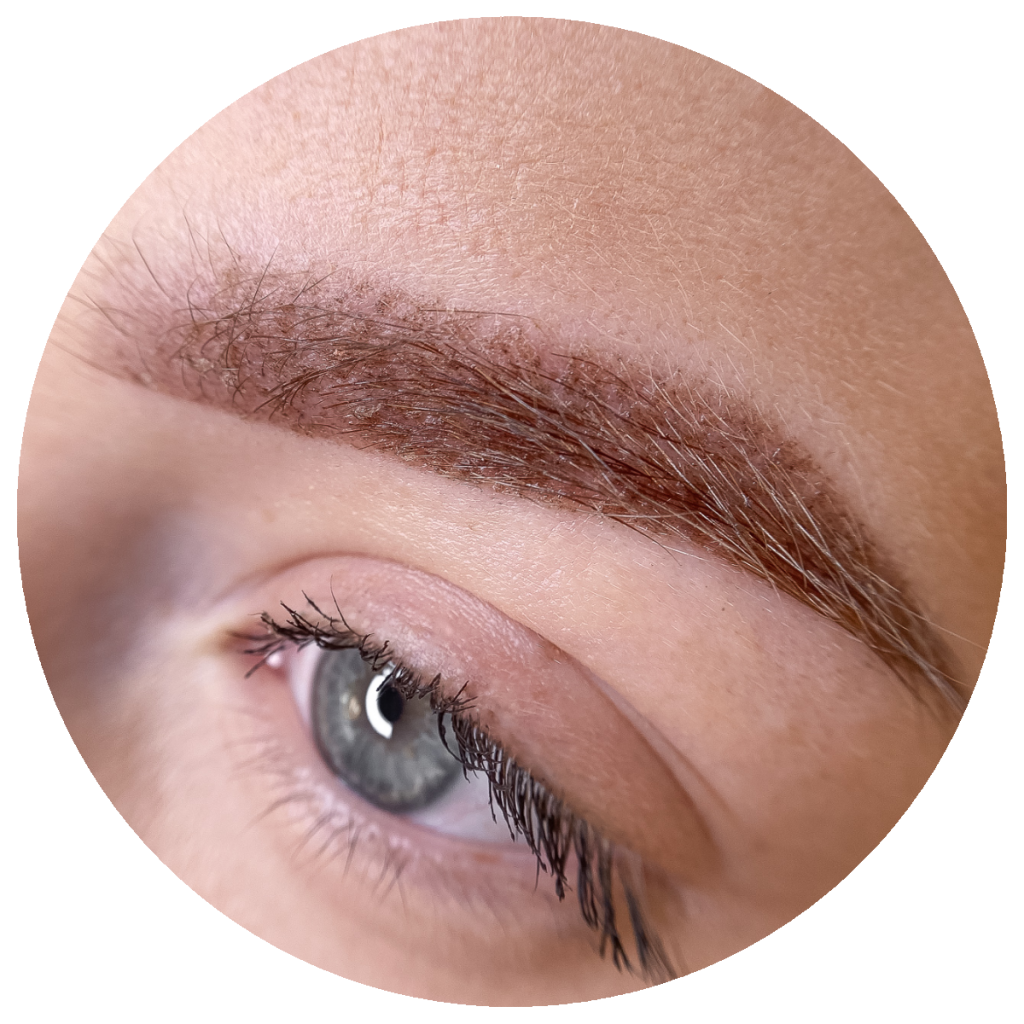
7+ DAY
When all the crusts are removed, the superficial skin is healed. You can get the eyebrows wet again and continue with a normal lifestyle. Eyebrows may look very light immediately after peeling.
Do not worry.
The pigment starts to appear for another 4-5 weeks until the inner layers of the skin heal.
The second procedure should be done 1.5-3 months after the first procedure.
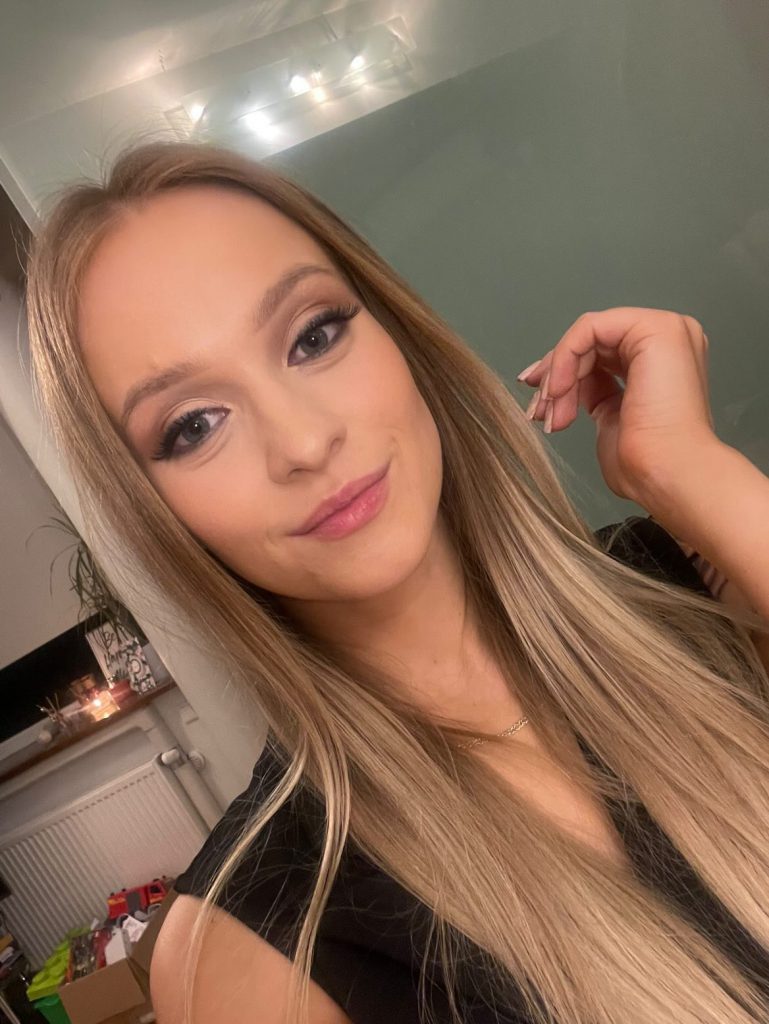

1 -3 DAY
In the evening before going to bed, wash your eyebrows very gently with a little soap and water. Wash in the direction of eyebrow hair growth. A clean cotton pad can be used for washing. The skin is traumatized and dirt/bacteria can accumulate inside. Failure to maintain hygiene is dangerous to health. After washing your eyebrows, dry them properly by dabbing them very gently with a clean towel or paper towel. Change the pillowcase and avoid sleeping on your face.
From now on, wash your eyebrows twice a day gently with a little soap and then dry them. Morning and evening.
Properly wipe your eyebrows in both directions 2x a day with a clean paper towel or cotton pad. At other times, don’t get your eyebrows wet. Wash your head last in the shower.
Immediately after the procedure and in the days that follow, the eyebrows may appear unusually dark and wide / large. There is no need to worry, because as you they heal, your eyebrows become 40-60% lighter and also narrower.
Redness may also occur immediately after the procedure, which usually disappears within a few hours.

3 – 7 DAY
Continue to wash your eyebrows 2x a day, but wipe them gently from the third day on, because a crust will start to form.
FROM DAY 7
Continue washing twice a day. Don’t wipe your eyebrows anymore. Start moisturizing your eyebrows 2x a day with a small amount.
The moisturizer must be applied in a very thin layer (an amount the size of a pea) to allow the eyebrows to receive oxygen. In the shower, avoid water getting on the eyebrows and wash your head only last, as the eyebrows must not be soaked or wet.

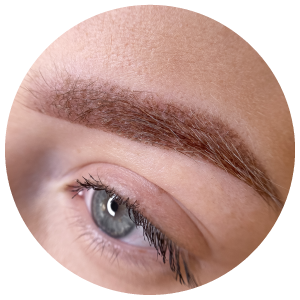
5-7 DAYS
Around this time, crusts form on the eyebrows and begin to come off. Let the crusts fall off, of course. The crusts come off unevenly.
Do not peel the crusts, otherwise you will create pigment-free spots on the eyebrows. Do not scratch or touch eyebrows with dirty hands / objects.
Avoid sauna, swimming pool, solarium, sunbathing and excessive sweating for a week until the eyebrows are completely peeled. Avoid makeup in and around the eyebrows before complete peeling. Don’t sleep on your face.

7+ DAYS
When all the crusts are removed, the superficial skin is healed. You can get the eyebrows wet again and continue with a normal lifestyle. Eyebrows may look very light immediately after peeling.
Do not worry.
The pigment starts to appear for another 4-5 weeks until the inner layers of the skin heal.
The second procedure should be done 1.5-3 months after the first procedure.